Exploring Cetaceans -Whales in Baja California Sur: Where, When, and How to See Them in the Wild
Baja California Sur is one of the world’s most spectacular destinations for whale watching, dolphin encounters, and snorkeling with marine giants. Whether you’re a nature enthusiast or an adventure seeker, witnessing cetaceans -whales, dolphins, orcas- in their natural habitat is a must-do experience. In this guide, we’ll explore the different species of whales and dolphins you can see, the best times to visit, and how you can join an unforgettable ocean safaris.
Cetaceans of Baja California Sur: Species and Best Viewing Times
Baja’s nutrient-rich waters attract a variety of whales and dolphins throughout the year. Here’s when and where you can see them
Humpback Whales (Megaptera novaeangliae)
- Season: December – April for whale watching but still we probably start seeing them from october while they migrate to their breeding area.
- Best Locations: Cabo San Lucas, San José del Cabo, East Cape, Magdalena Bay
- How to See Them: Boat whale watching tours and ocean safaris
- Experience: Witness their spectacular breaching, tail slaps, and acrobatic displays as they migrate to Baja for mating and calving.
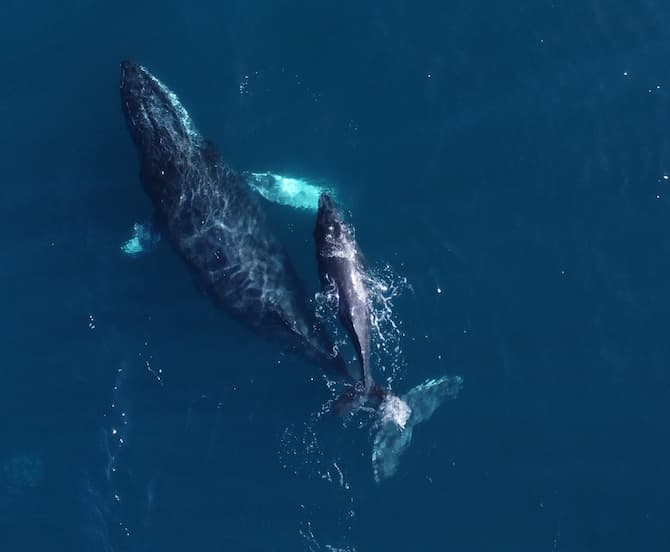
How Are Humpback Whales Doing Today?
Once hunted to near extinction during the whaling era, humpback whales have made a remarkable comeback thanks to global conservation efforts. Since the 1966 ban on commercial whaling, their populations have rebounded significantly. Today, their conservation status is classified as Least Concern by the IUCN, but challenges remain.
Today we see the new born whales after their protection are not scared to whale watching boats or humans as they come back every year to Baja California Sur and they don´t try to swim away, in fact some lucky days they get so close to the boats and even take their heads out spy hooping.
Threats to Humpback Whales
- Climate Change – Rising ocean temperatures and shifting prey availability affect their feeding and migration patterns.
- Entanglement in Fishing Gear – Many humpbacks become caught in fishing nets, leading to injury or death.
- Vessel Strikes – Increasing boat traffic in whale habitats poses a serious threat to their safety.
- Ocean Noise Pollution – Ship engines and industrial activities interfere with whale communication and navigation.
Fascinating Facts About Humpback Whales
- Impressive Migrations – Humpbacks migrate many milles annually, traveling from cold feeding grounds like Alaska to warm breeding waters like those off the coast of Cabo San Lucas.
- Unique Songs – Males produce complex songs that can last for hours, believed to play it to act as the strongest macho alfa..
- Giant Acrobats – They are famous for breaching, tail slapping, and fin waving—behaviors that captivate whale watchers and it´s a way their communicate with other whales.
- Bubble-Net Feeding – Some humpback populations use teamwork, creating spirals of bubbles to trap schools of fish, but they can also jump out of the water and stun fishes to easier eat them or feeding on krill in some areas.
- Long Life Avergage– These whales can live for over 50 years, with some individuals reaching 80 years or more.
Gray Whales (Eschrichtius robustus)
- Season: January – March
- Best Locations: Magdalena Bay, San Ignacio Lagoon, Guerrero Negro, Ojo de Liebre Lagoon but this 2025 year as the niña phenomen brought colder water they are migrating southern like Cabo and we sight decens of them near the shore.
- How to See Them: Small boat (panga) excursions in shallow lagoons
- Experience: Get up close and personal with these friendly whales, famous for their curiosity and willingness to interact with boats. Still this wasn´t like this during whaling era when they were hunted. Grey whales where probably scared about it and they even tryed to hit the whalers boats trying to escape from them. That´s the reason why they were nemed as a “devil fish”. Right now they can be the most friendly marine mammals as you can see many pictures with people even kissing them when they get really lucky.
Grey Whales: Fascinating Facts and Their Current Status After Whaling
Baja California Sur is home to one of the most incredible wildlife spectacles in the world: the annual migration of grey whales (Eschrichtius robustus). These giants travel thousands of miles from the cold Arctic waters to the warm, shallow lagoons of Mexico, where they give birth and nurture their young. But how are grey whales doing today after centuries of whaling? Let’s dive into their story.
A Brief History of Grey Whales and Whaling
Grey whales were once on the brink of extinction due to commercial whaling, which peaked in the 19th and early 20th centuries. Their predictable migration patterns made them easy targets, especially in their calving lagoons along the Pacific coast of Baja California. However, thanks to international conservation efforts and the banning of commercial whaling in 1946, grey whale populations rebounded significantly. By the late 20th century, the species had recovered enough to be removed from the U.S. Endangered Species list in 1994. Still the North Atlantic population of Grey Whales dissapeared while whales hunting and there is only the north pacific population left.
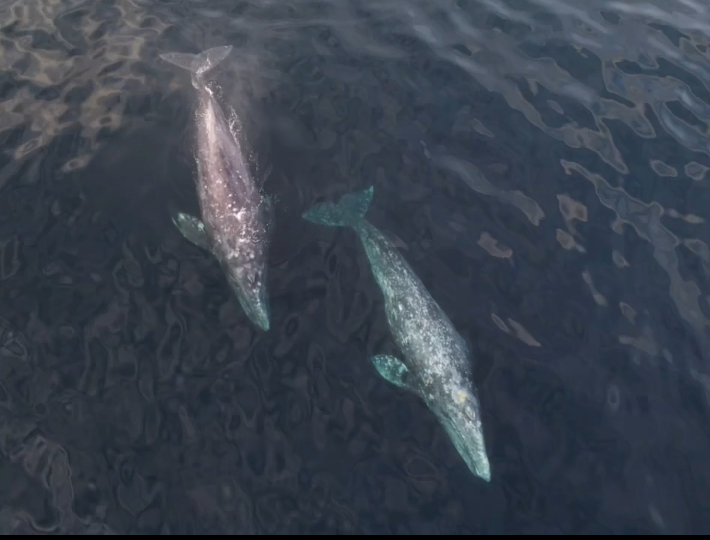
How Are Grey Whales Doing Today?
While grey whales made an inspiring comeback, recent years have presented new challenges. Since 2019, scientists have observed an Unusual Mortality Event (UME), where an alarming number of grey whales have been found stranded or underweight. Researchers believe this could be due to multiple factors, including climate change, shifts in food availability, and increased ocean pollution. Some key concerns include:
Changes in Arctic Feeding Grounds: Warming waters and melting ice are impacting the whales’ primary food sources, such as amphipods, leading to malnutrition.
Increased Human Impact: Ship traffic, entanglements in fishing gear, and ocean noise pollution are posing serious threats to their survival.
Extreme Weather Events: Climate change is causing unpredictable weather patterns, affecting their migration and breeding cycles.
Blue Whales (Balaenoptera musculus)
- Season: February – April
- Best Locations: Loreto, Sea of Cortez
- How to See Them: Specialized whale-watching tours in the Sea of Cortez
- Experience: Spot the largest animal on Earth, recognized by its massive size and characteristic blue-gray coloration.
Blue Whales: The Largest Animals on Earth and Their Current Status
The blue whale (Balaenoptera musculus) is the largest animal to have ever lived on Earth, reaching lengths of up to 100 feet – 30 meters and weighting as much as 200 tons. These giants have been in the world’s oceans, including the waters of Baja California Sur, where lucky visitors can witness their presence during the right season. But how are blue whales doing today, and what challenges do they face? Let’s dive into some fascinating facts and their current conservation status.
How Are Blue Whales Doing Today?
Once hunted to the brink of extinction due to commercial whaling in the 20th century, blue whales have been protected under international laws since 1966. While populations are slowly recovering, they remain endangered.
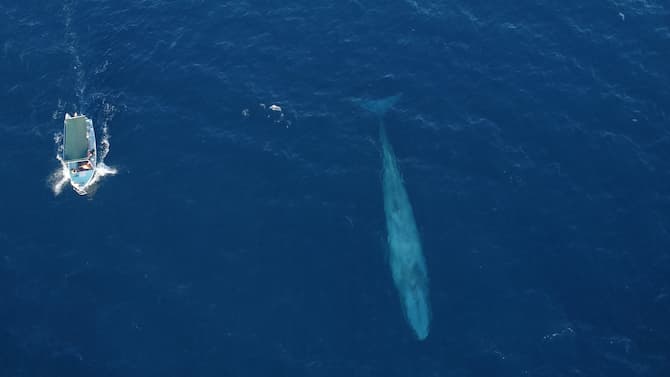
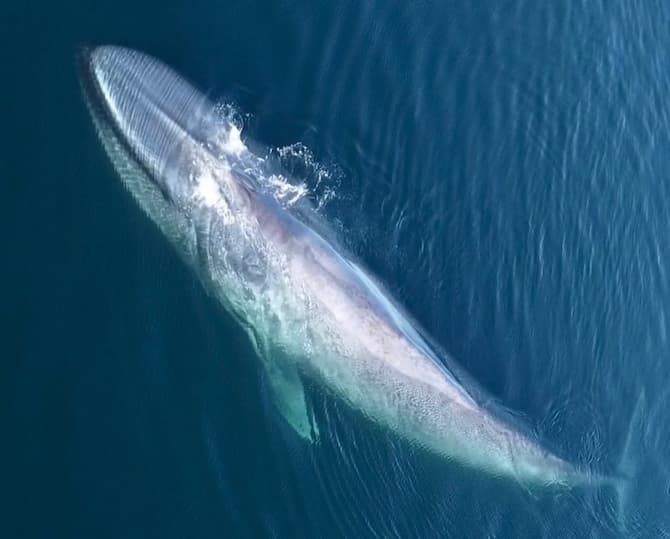
Incredible Facts About Blue Whales
Largest Heart in the Animal Kingdom – A blue whale’s heart can weigh over 400 pounds (180 kg), about the size of a small car.
Loudest Animal on Earth – Their vocalizations can reach up to 188 decibels, louder than a jet engine, and can travel hundreds of miles underwater. We can´t hear them with a regular hydrofone as we do with humpback whales but it´s still possible with the right equipment.
Massive Daily Diet – Blue whales consume around 4 tons of krill per day during feeding seasons. They can´t spot eating as grey and humpack whales because they are very big for fasting. When they come to Baja California Sur, mainly to Loreto they feed on krill as they mate and calve their young.
Long Lifespan – These whales can live up to 80-90 years, making them one of the longest-living marine species.
Fast Swimmers – Despite their enormous size, blue whales can reach speeds of up to 20 mph when needed. As I like droning and seeing different behaviours from the air I could find the fast they are when I compared following smaller whales the dron goes smudler than with blue whales.
Orcas (Orcinus orca)
- Season: Unpredictable, but most sightings occur from December – April. May be because the whales are migrating to Baja California Sur and they like eating baby whales. Also we can find them during april to june as the mobula rays migrate and are part of their diet. Still we are seeing them most part of the year from the pacific side to the East Cape in the Golf of California.
- Best Locations: Cabo San Lucas, Sea of Cortez
- How to See Them: Ocean safaris, lucky encounters during whale watching tours
- Experience: Watch the top predator of the ocean in action—if you’re lucky, you might even see them hunting!. I have to say that being in the ocean with them has been a complete privilege. They are in some way bigger dolphins and the mith of killer whales is similar to the mith of sharks but there haven´t been report of orcas in their natural habitat attacking humans.
Orcas: Fascinating Facts and Their Behavior Around the World
Orcas (Orcinus orca), also known as killer whales, are among the most intelligent and social marine mammals in the ocean. These apex predators can be found in oceans worldwide, from the freezing Arctic to the warm waters of Baja California Sur. Their unique hunting techniques, strong family bonds, and adaptability make them one of the most remarkable species in the marine ecosystem.
Amazing Facts About Orcas
Top Predators of the Ocean – Orcas are at the top of the marine food chain, preying on fish, squid, seals, and even great white sharks.
Global Distribution – They are found in all of the world’s oceans, from polar ice caps to tropical seas.
Sophisticated Communication – Orcas use complex vocalizations, including clicks, whistles, and calls, to communicate with their pod.
Strong Family Bonds – They live in close knit matrilineal pods led by an experienced female, with some family units staying together for life.
Diverse Hunting Strategies – Different orca populations have specialized hunting techniques, such as beaching themselves to catch seals like it happens in Peninsula de Valdes Argentina or working together to create waves that knock prey into the water in the Artics.
Orcas in Baja California Sur
While orcas are not commonly seen in Baja California Sur, they do occasionally appear, particularly near the Sea of Cortez. These sightings are usually transient orcas, known for their dynamic hunting behavior and adaptability. Watching orcas in the wild is an unforgettable experience, and Animalia Ocean Safari offers ethical marine safaris to witness these incredible creatures.
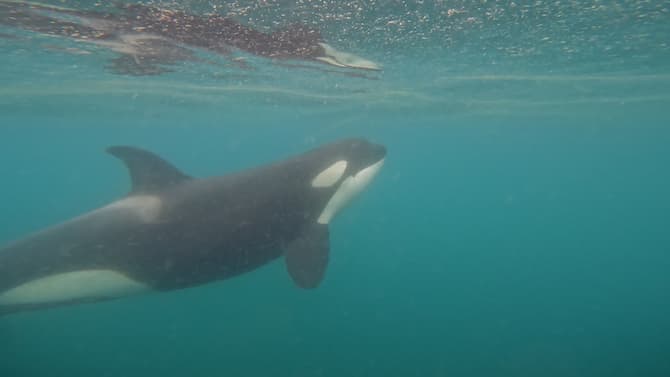
Orca Behavior and Hunting Techniques Worldwide
1. Resident Orcas (Fish Eaters)
Found in the Pacific Northwest, particularly around British Columbia and Alaska.
Feed mainly on salmon and other fish species.
Known for their stable and vocal pods.
2. Transient Orcas (Mammal Hunters)
Roam along coastlines and hunt marine mammals like seals, sea lions, and dolphins.
Use stealth and silent hunting techniques to ambush prey.
3. Offshore Orcas
Live in deeper ocean waters and are less studied.
Believed to feed on schooling fish and possibly sharks.
4. Antarctic and Arctic Orcas
Specialized in hunting seals and penguins by knocking them off ice floes.
Some use cooperative hunting methods to create waves and dislodge prey.
Recent Posts
- Experience the Magic of Mobula Rays on an Ocean Safari in Cabo San Lucas & La Ventana
- Exploring Cetaceans – Whales in Baja California Sur: Where, When, and How to See Them in the Wild
- The Complete Guide to Scuba Diving in Cabo San Lucas
- Ocean Safari in La Ventana: A family Friendly Adventure
- How to do responsible whale whatching in Cabo San Lucas
- Martin_scubadive
- One Comment

Recent Comments